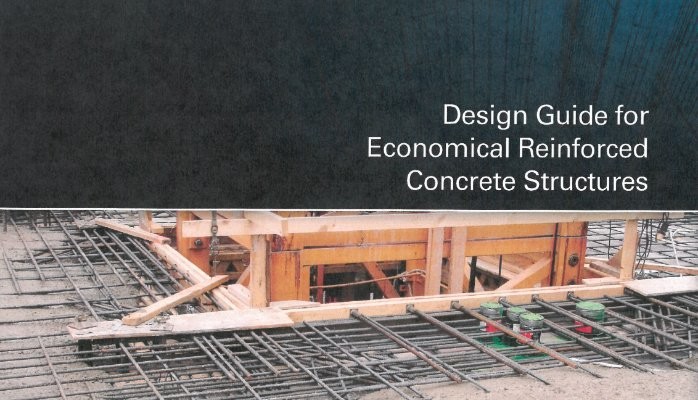Structural
Tips for Reinforced Concrete Structural Design: Crafting Robust and Efficient Structures
Reinforced concrete structural design demands a meticulous approach to ensure the creation of structures that stand the test of time. Here are essential tips to guide engineers and designers in crafting robust and efficient reinforced concrete structures.
1. Understand Material Properties: The Foundation of Reinforced Concrete Structural Design
Before diving into the reinforced concrete structural design process, gain a profound understanding of the properties of concrete and steel. Comprehend how these materials behave under various conditions, including stress, strain, and environmental factors. This knowledge forms the foundation for making informed decisions throughout the design process.
2. Thorough Load Analysis: Anticipate and Prepare
Conduct a comprehensive load analysis to understand the forces that the structure will face during its lifespan. Consider both dead and live loads, environmental factors, and potential variations. Anticipating these forces is crucial for designing a structure that can safely and efficiently bear the loads it will encounter.
3. Optimize Reinforcement Layout: Strategic Placement Matters
Strategically place steel reinforcement to counteract the weaknesses of concrete, particularly in tension. Ensure that reinforcement is appropriately distributed to manage stresses and prevent structural failure. Efficient reinforcement layout contributes significantly to the overall strength and stability of the structure.
4. Consider Structural Integrity Factors: Balance Safety and Functionality
Incorporate considerations for stability, serviceability, and durability into the design. Striking a balance between safety and functionality is paramount. Assess how the structure will perform over time, considering factors such as creep, shrinkage, and long-term loading conditions.
5. Precision in Concrete Mix Design: Tailor for Purpose
Tailor the concrete mix to meet the specific requirements of reinforced concrete structural design. Consider factors such as strength, workability, and durability when determining the mix proportions. A well-designed concrete mix ensures that the final structure achieves the desired properties and performance.
6. Detailing of Reinforcement: The Devil is in the Details
Pay meticulous attention to the detailing of steel reinforcement. Proper detailing ensures that the reinforcement effectively resists tension forces and enhances the overall ductility of the structure. Well-detailed reinforcement contributes to both the aesthetic and structural success of the design.
7. Formwork Precision: Replicate the Vision Accurately
The formwork is the mold that shapes the concrete. Design formwork with precision to accurately replicate the envisioned structure. Attention to formwork details ensures that the final structure aligns with the design specifications, both in terms of aesthetics and structural integrity.
8. Embrace Technological Advancements: Explore BIM and Beyond
Leverage technological advancements such as Building Information Modeling (BIM) to enhance collaboration and efficiency in the design process. BIM facilitates a more integrated approach, allowing seamless communication between architects and engineers. Stay abreast of emerging technologies that can improve the design workflow.
9. Sustainability Integration: Think Beyond Strength
Incorporate sustainability considerations into the design process. Evaluate the environmental impact of materials and construction methods. Opt for recycled materials, explore eco-friendly practices, and conduct life cycle assessments to make informed decisions that contribute to a more sustainable built environment.
10. Mitigate Cracking: Proactive Strategies
Implement proactive strategies to manage and minimize cracking. Proper reinforcement detailing, control joints, and considerations for curing practices play pivotal roles in preventing undesirable cracks. Manage the aesthetics and structural integrity of the design by addressing potential cracking issues.
11. Corrosion Protection: Safeguard the Structure
Protect the structure against corrosion by employing corrosion-resistant reinforcement and ensuring adequate concrete cover. Regular inspections and maintenance contribute to the long-term durability of the structure, safeguarding it against potential deterioration.
12. Continuous Professional Development: Stay Informed
Stay informed about the latest advancements, research findings, and best practices in reinforced concrete design. Continuous professional development ensures that designers and engineers are equipped with the latest knowledge and techniques to address evolving challenges.
13. Collaborate Effectively: Bridge Disciplines
Effective collaboration between architects, structural engineers, and other stakeholders is crucial for successful reinforced concrete structural design. Foster open communication channels to ensure that the design aligns with both aesthetic and functional objectives.
14. Learn from Past Projects: Continuous Improvement
Reflect on the outcomes of past projects in reinforced concrete structural design. Analyze successes and challenges to inform continuous improvement. Learning from experience contributes to refining design approaches and overcoming potential pitfalls in future projects.
15. Regulatory Compliance: Navigate Codes and Standards
Stay well-versed in local and international building codes and standards. Compliance with regulations ensures that the designed structure meets safety requirements and legal obligations in reinforced concrete structural design. Regularly update knowledge to navigate the evolving landscape of construction regulations.
Incorporating these tips into the reinforced concrete structural design process empowers professionals to create structures that not only meet safety and performance standards but also contribute to sustainable and resilient built environments.


